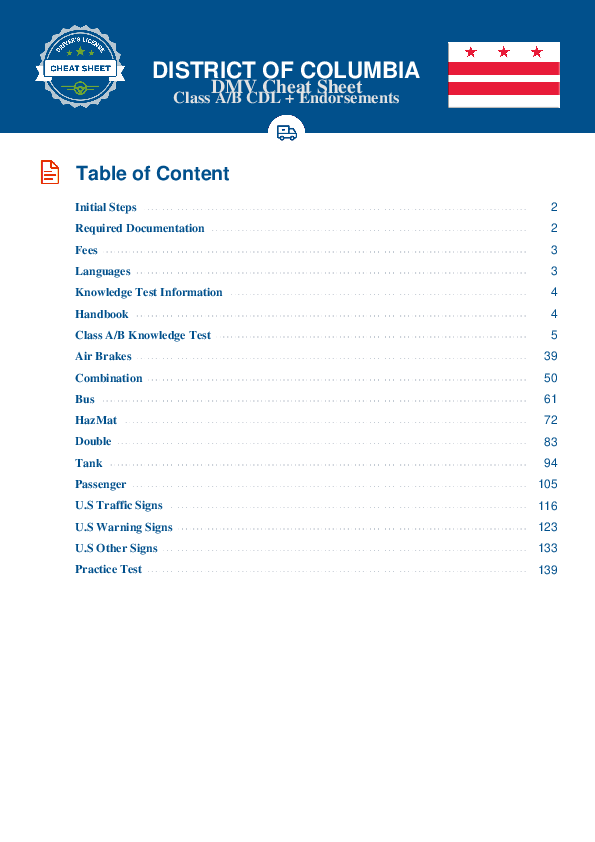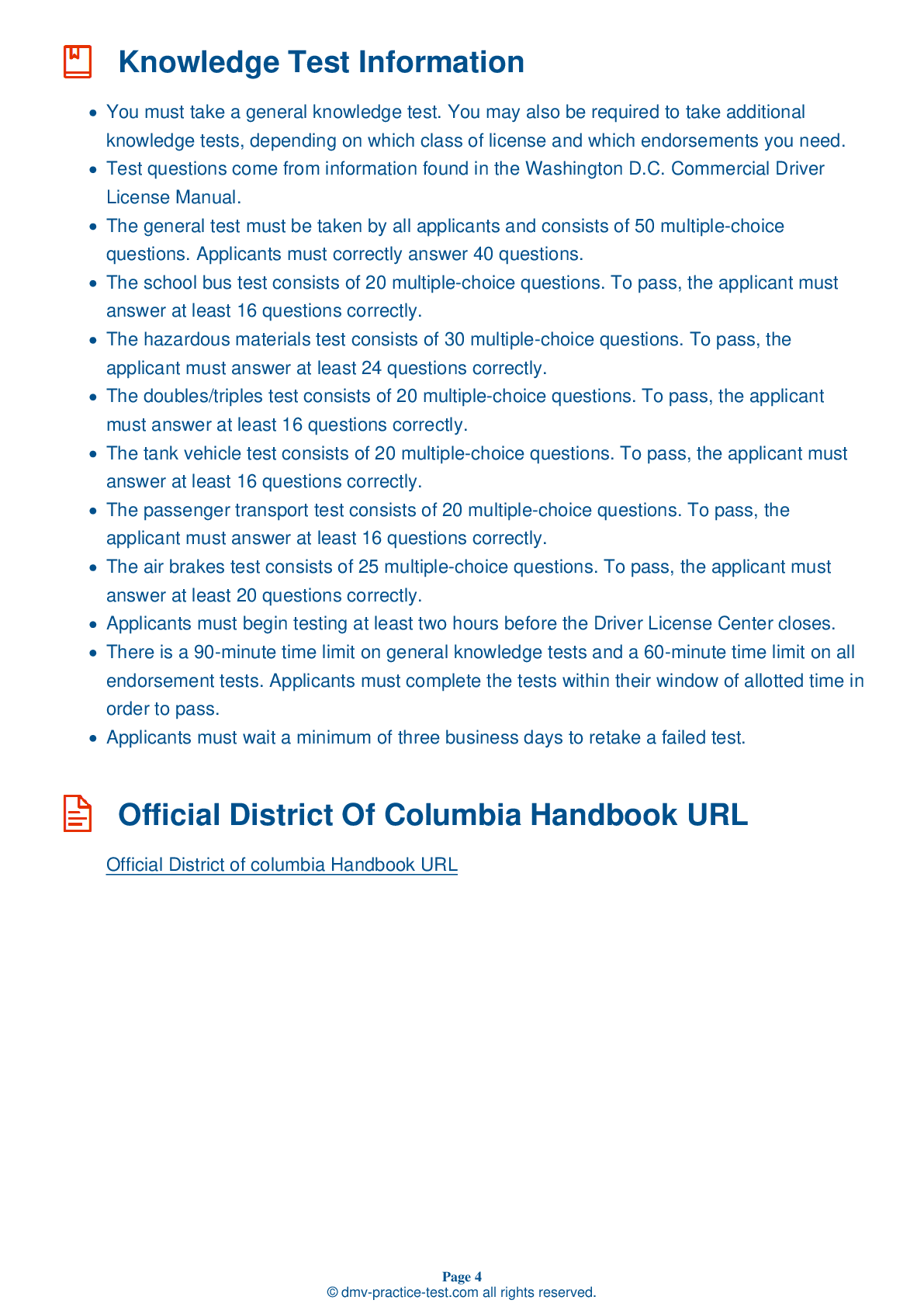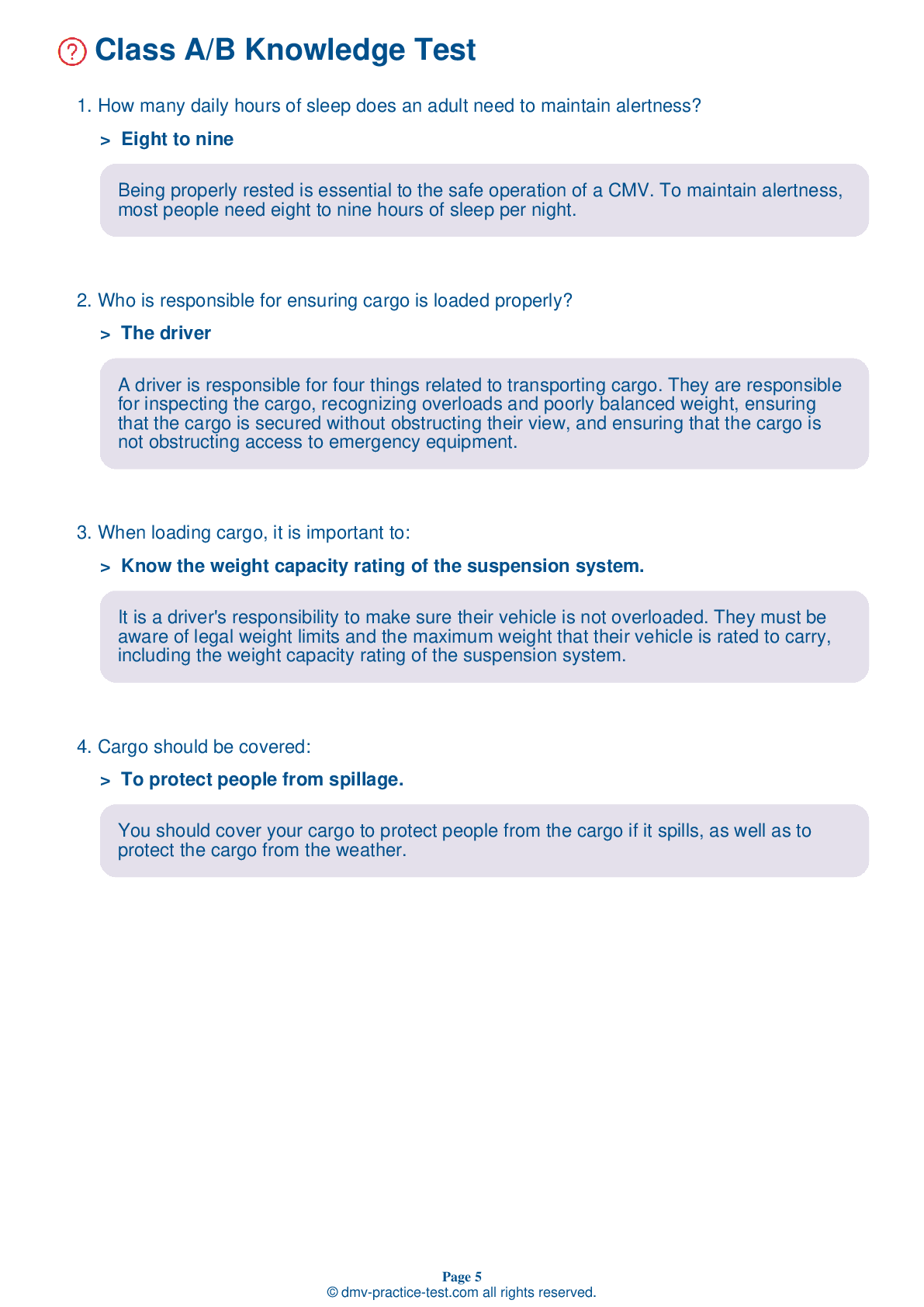Class A Driving Test | District Of Columbia 2025 #2 Page 4 of 7
Train for FREE online with our District Of Columbia class A license test. The official exam test consists of several obligatory parts, with all of them checking your knowledge of different blocks of road rules. If you need to obtain a DC CDL class A permit in 2025, practice as much as possible. Free sample tests published on our website will help you check and improve your knowledge and boost your grades. Please bear in mind that CDL class A requirements may vary from state to state.
22 . When driving through fog, a driver should:
If you must drive in fog, you should use your low beam headlights.
23 . During the pre-trip inspection test, you will be:
During the vehicle inspection test, you will be asked to do a complete inspection of your vehicle. You will need to explain what you are inspecting and why.
24 . What is a danger of rolling back when you start to accelerate?
To avoid hitting someone or something behind you, it is important to ensure that your vehicle does not roll backwards when starting from a stop. If your vehicle has a manual transmission, partly engage the clutch before taking your foot off the brake.
25 . A CMV should:
All commercial motor vehicles are required to be equipped with the proper emergency equipment. This may include spare electrical fuses; three red reflective triangles, six fuses, or three liquid burning flares; and at least one properly charged and rated fire extinguisher.
26 . You must put out emergency warning devices within ____ of stopping on the side of the road.
If you must stop on the shoulder of a road, put out your emergency warning devices within 10 minutes of stopping. When pulling off the road to stop, be sure to turn on your four-way emergency flashers.
27 . Tie-downs are used to:
On flatbed trailers and trailers without sides, cargo must be tied down to prevent it from shifting or falling in transit. There should be at least one tie-down for every 10 feet of cargo. Regardless of the size of the cargo, at least two tie-downs must be used.
28 . When approaching a downgrade, how can you reduce the amount of braking that will be needed?
Always shift to a lower gear before starting down a hill. Doing this will help your vehicle maintain a safe speed without you needing to use the brakes too much.
See the exact questions that will be on the 2025 District Of Columbia DMV exam.
99.2% of people who use the cheat sheet pass the FIRST TIME
Lillian MCcranie explains how our CDL study guide was helpful in passing the exam and recommends it to everyone.
Cameron tells us how he purchased the CDL exam, and found it to be a useful tool which helped him pass the exam and find a job.



